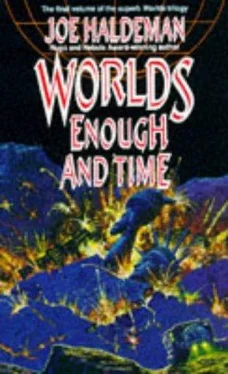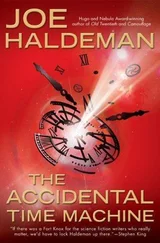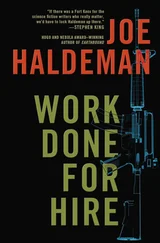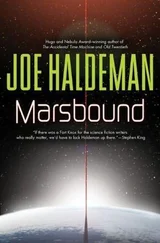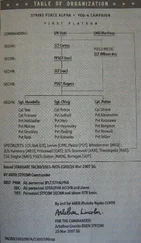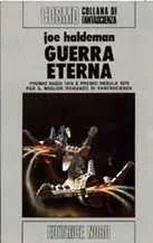“It’s not their business. Besides, we’ve already discussed it. What I have to think about is whether I want to be responsible for bringing another person into this world, which may be doomed. And then if I do, whether I want to carry the fetus.”
“Most professional women don’t.”
“Of course not. But I’ve always been curious about it.”
“Well, you could carry a big melon around all day. I could find some pills to give you constipation and morning nausea. For hemorrhoids, you’d just have to use your imagination. And then the actual delivery—”
“Hey, don’t try to talk me into it.”
“It’s a natural conflict with us OB/GYNs. The obstetrician wants that fetus under glass, where he can just pull it out when it’s done. The gynecologist wants it in the uterus, where it belongs.” He rummaged through a drawer and brought out a holo slide. “This is a pretty evenhanded discussion of the alternatives. So did you and your husbands agree on anything?”
“They both agreed they didn’t want a bow-legged blimp staggering around. But as I say, that’s not their decision. We all did agree on the necessity of a sperm slice. One of them has a load of birth defect genes; the other has a history of drug abuse and alcoholism.” John had made a joke about “one from column A, one from column B,” which he had to explain.
“With a gamete splice, you probably do want to have it ex utero . Greater chance of success.”
“That’s what the guy in New New said, Dr. Johnson. But I might want to give the other way a try anyhow. We could always start over if I miscarried.”
“It’s not that you would run out of ova. But a miscarriage is an upsetting experience.”
“Exactly what Johnson said, to the word. Do they program you guys at the factory?”
He shrugged. “In a way, I guess they do. It’s your body, of course.”
“That’s what they say.” She picked up the slide. “Call you in a few days?”
“Yes. If you decide on having it ex utero , we’ll go ahead with the gamete splice and get in touch in about six months so you can watch the uncorking.”
“Otherwise?”
“Uterine, we’ll have to monitor your cycle for at most one period. We fertilize the ovum and you come in the next day, timing it so the egg has divided twice, into four cells. Night time. The implantation doesn’t hurt, but unless we can get the zero gee clinic for half a day, you’ll be on your back until the next evening.”
“Sounds romantic.”
“Actually, it can be. Some women bring their husbands.” O’Hara tried to visualize that—her ankles in stirrups, John and Dan sitting there while a technician worked a long syringe up into her uterus—and laughed out loud.
With nothing on her schedule for the next three hours, O’Hara took the instructional slide back to her office and displayed it. It was rather daunting to have that corner of her room taken up by a uterus, cervix, and vagina the size of a walk-in closet, with a matching penis that was slightly translucent but functioned all too well. How did they get the camera and the laser in there? How could the couple do anything? Then there were time-lapse displays of a fetus maturing, both in the uterus and under glass, and then a close-up of the implantation procedure.
It was all very fascinating and it saved her the trouble of going to lunch.
9. DIONYSUS MEETS GODZILLA
PRIME
During the three months mandated for drifting, the scientists and engineers worked around the clock, retrieving and recreating knowledge. Time enough for research later. With every day of silence it seemed more and more likely that they would never hear from New New again.
O’Hara was one of the first to articulate the difference between the seriousness of the scientists’ loss and that of the arts: “You could destroy every specific reference to calculus,” she said in a report, “and still write a calculus text, by getting together a committee of people who had studied it recently or used it in their work. Well written or not, the text would still have all the information. But the only way we could get back Crime and Punishment , for instance, is to find somebody who had memorized it word for word, preferably in Russian. Nobody had.
“That’s a good case in point. Anybody who’s interested in fiction knows what Crime and Punishment is about, whether they’ve read it or not. But now it exists only as part of a new oral tradition—descriptions of the iost’ works—and it’s one of literally millions.”
O’Hara was part of a six-person ad hoc committee to retrieve as much literature as was possible. She was glad not to be in charge of it—Carlos Cruz had tentatively volunteered, and everybody else took one step backward—because the organizational details were maddening. More than half of ’Home’s ten thousand people had something to offer, either a physical document like O’Hara’s The Art of War or a memorized bit of prose or verse or song. The documents had to be scanned into computer page by page (in New New there would have been a machine to do it automatically) and all of the people had to be recorded and then interviewed for reliability and information about the social context of the thing they had memorized, which was often obscure or trivial. Of course their rule was to refuse nothing as insignificant, and press every informant for another line or two from something. They got a lot of limericks.
There were some heartening bits of luck. New New’s Shakespeare Society had put on a production of Hamlet two years before; the people who played Hamlet and Ophelia were on board and, between them, could still reel off most of the play. A sanitation engineer with an uncanny trick memory spent a month reciting all of Palgrave’s Golden Treasury and most of Kipling’s verse.
But a list of the texts left undamaged by the sabotage seemed more perverse than random. Quaint science fiction that hadn’t been read in a hundred years, pornography, forgotten best-sellers, nurse novels, costume-opera fantasies, the complete works of Mickey Spillane. It seemed to O’Hara that whenever she tried to find a worthwhile piece of writing it was invariably gone, the blank spot in the index flanked by titles of aggressive worthlessness. The logic behind it was clear: with automatic data entry and its compact charmed-hadron memory system, the library in New New had consumed everything written, with no regard for anybody’s opinion of its quality. So 98 percent of the library was crap, and a random one tenth of that was still 98 percent crap.
One thing that particularly galled O’Hara was that, because of some peculiarity of storage, every existing kinetic novel came through unscathed—including A Matter of Time, a Matter of Space , the dreadful romance upon which Evy wasted several hours every week. Kinetic novels were the blasted progeny of the amateur publishing “revolution” at the end of the twentieth century. For a small subscription fee you were not only allowed to read the novel, but could attempt to revise it. You could add a section or rewrite an existing one, and send your masterpiece in to the publisher. If the publisher gave tentative approval, the change would be reviewed by a hundred other subscribers, selected at random. If half of them liked it, it would become part of the novel, and you would be listed as coauthor. Some classics had more than a thousand co authors.
The writers who created the original templates for these novels obviously needed a certain sense of detachment toward their craft, as well as a talent for introducing accessible infelicities, upon which the paying customer could gleefully pounce. On Earth they had been well-paid celebrities, often more interesting than their books. Marc Plowman, author of A Matter of Time, a Matter of Space and thirty others, had been a serious poet until he typed out a kinetic novel and discovered in himself an appetite for fast horses and slow women.
Читать дальше
